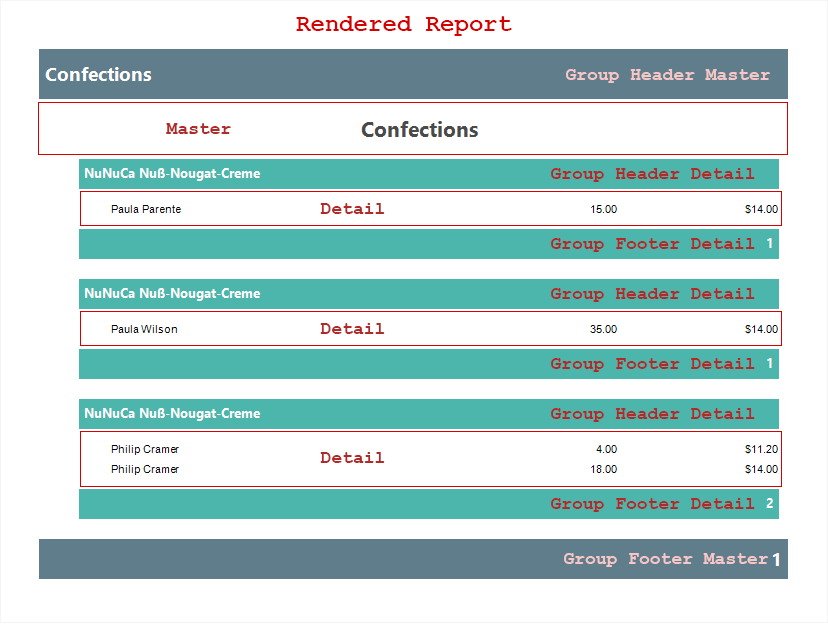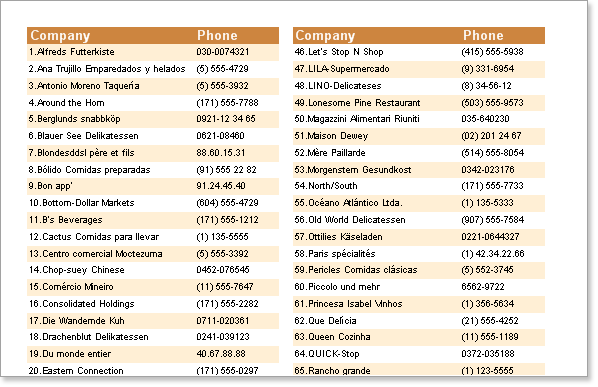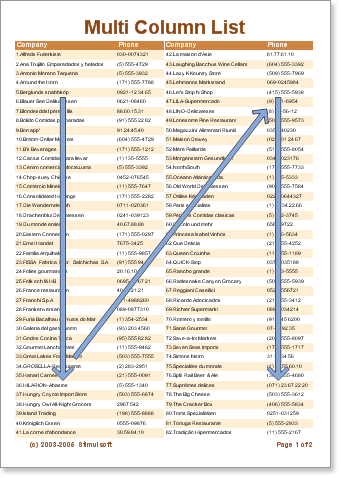Use the Columns property to output the data on the page on a column-by-column basis. By default this property is set to 0, but setting a value greater than or equal to 2 will cause the data to be output in columns. You also need to set the ColumnWidth and ColumnGaps properties.

The ColumnWidth property is used to set the width of the column and applies to all columns printed on the page. The ColumnGaps property is used to set the space between columns.
![]() important:To print columns on a page, you need to set three page properties. The Columns property is used to define the number of columns,ColumnWidthThe property is used to set the width of each column,ColumnGapsProperties are used to set the space between columns.
important:To print columns on a page, you need to set three page properties. The Columns property is used to define the number of columns,ColumnWidthThe property is used to set the width of each column,ColumnGapsProperties are used to set the space between columns.

| First column width | |
| Second column width | |
| Space between columns |
In column output mode, the page is divided vertically, and the report is output logically in the first column, the report in the second column, and so on.
![]() caution:There is no limit to the number of columns on the page.
caution:There is no limit to the number of columns on the page.
example
Consider the case where you need a two-column report. Set the Columns property to 2 (this means that there will be 2 columns printed on each page). Set the ColumnWidth to the appropriate width for one column and set the space between the columns with the ColumnGaps property. Place two bands, a header band and a data band, on one page. The data header is output to the header band, and the data itself is output to the data band.
![]() caution:Column boundaries are indicated by red lines.
caution:Column boundaries are indicated by red lines.

Run the report. Each page has two columns and all rows are numbered.

Columns are automatically generated – Stimulsoft Reports prints bands until the page runs out of free space. Then, instead of creating a new page, a new column is added and the data is output to the new column until there is no more free space. This is repeated until the required number of columns is generated, new pages are created if there is still data to output, and the process is started again.





